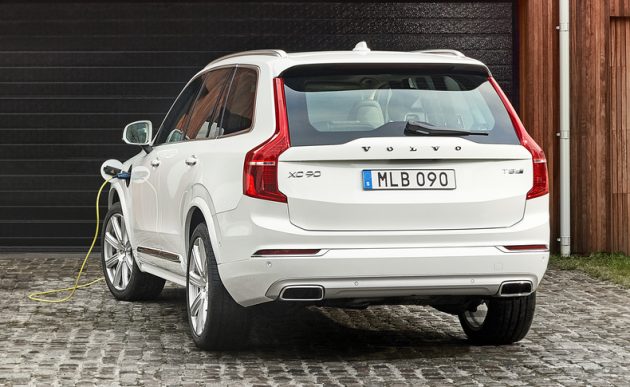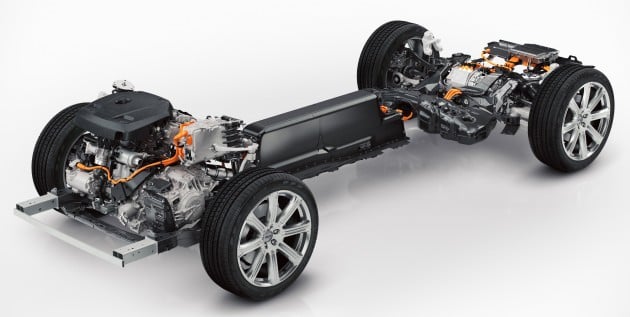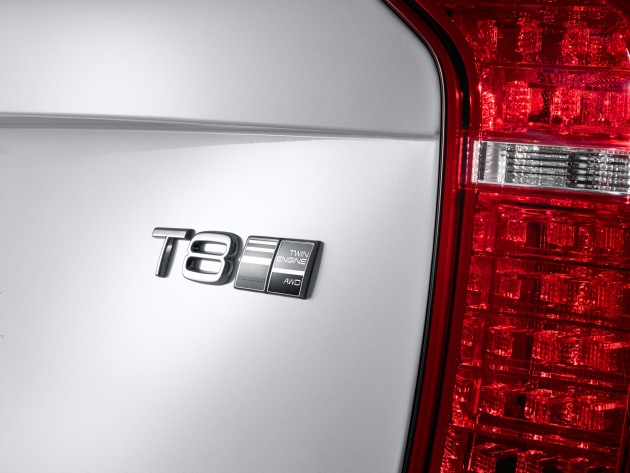Getting the most output from a powertrain is pretty straightforward affair, but doing so while achieving the best fuel economy is a true challenge for any carmaker today. Volvo is no exception, which is why the T8 Twin Engine found in its all-new XC90 is a masterpiece that combines thrilling power with exceptional efficiency.
“Volvo Cars has made a clear commitment to electrification across our entire product range. Our Twin Engine technology is a confident first step forward. This technology delivers a no compromise balance of clean, efficient performance and exceptional driving pleasure. It is all about using the latest available technology to address unmet consumer needs,” said Dr Peter Mertens, senior vice president research & development at Volvo Car Group.
The T8 Twin Engine features Volvo’s Drive-E petrol engine (320 hp/400 Nm), which benefit from various innovations in engine technology such as twincharging (supercharging and turbocharging) systems to ensure that they are as powerful as straight-six and V8 engines, without the bulk.
The engine is assisted by an electric motor (87 hp/240 Nm) located in the rear axle, to deliver a total system output of 407hp of and 640Nm. Even with all that power, the XC90 is capable of consuming just 2.1 litres per 100 km (47.6 km per litre) based on European NEDC test cycle. For zero emissions travel, the XC90 is even capable of a pure electric driving range of up to 43 km.
Drivers will also be able to choose between several powertrain modes – Pure, Hybrid and Power – depending on their needs. The first (Pure) allows the car to run on electric power alone, perfect for cruising around town, all without any emissions.
In Hybrid mode, the system ensures an optimal combination of the internal combustion engine and the electric motor to propel the vehicle. For those who require maximum performance, there is Power Mode, where the system provides all available power to the driver.
However, Volvo’s Twin Engine powertrain is distinguished from others, as the Swedish carmaker did not consider introducing electrification as an add-on solution to its vehicles. Instead, Volvo had already envisioned its new Scalable Product Architecture (SPA) platform to feature electrification from the get-go.
For instance, the position of the 9.2 kWh battery pack that powers the electric motor on the XC90 T8 Twin Engine is located in the car’s centre tunnel, where the traditional prop shaft that goes to the rear axle is normally found. This is unlike the setups found on other plug-in hybrid electric vehicles (PHEVs), where the batteries are “added” in to areas around the car, commonly in the boot.
One of the primary reasons behind Volvo’s planning is safety, where the batteries are encased safely within the XC90’s safety cage. As most modern (PHEVs) employ lithium-ion batteries, a rear-mounted solution doesn’t offer the best level of protection from impact in the event of a collision.
With no batteries in the rear, this will also allow for uncompromised boot space, unlike other PHEVs from other manufacturers. Not only that, the central-mounted position of the batteries also allows for a lower centre of gravity and better weight distribution, meaning the car’s dynamics aren’t jeopardised.
The XC90 also features an ingenious electric all-wheel drive system, due to the fact that the battery pack displaces the traditional prop shaft, meaning there is no physical connection from the front to the rear axle.
Therefore, the Drive-E engine focuses exclusively on powering the front wheels, while the rear axle-mounted electric motor drives the rear wheels. Combined, they provide exceptional traction, and form the basis of the Twin Engine moniker.
This level of sophistication and performance from the T8 Twin Engine powertrain, it is little wonder then that the locally-assembled SUV qualified for the Malaysian government’s EEV incentives, resulting in a significant decrease in pricing by some RM50,000, at just RM403,888 on-the-road without insurance.
Of course, the powertrain is just one of the many highlights of the all-new Volvo XC90. There is also the head-turning Scandinavian design inside and out, plus the Swedish camaker’s undeniable commitment to safety. The latter is exemplified when the XC90 was rated Euro NCAP’s safest car of 2015 and awarded the Insurance Institute for Highway Safety’s (IIHS) Top Safety Pick+









